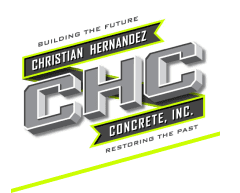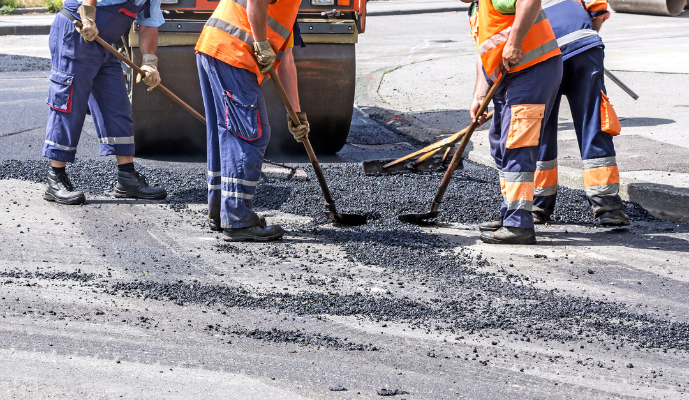Homeowners often face the dilemma of choosing the right repair material when confronted with cracks, potholes, and deterioration. Understanding the inherent material differences, as well as their long-term performance under changing climates and heavy loads, is essential for making an informed decision. Asphalt, a composite of aggregates, filler, and binder (bitumen), is known for its flexible, resilient nature. In contrast, concrete—a mixture of cement, water, and aggregates—offers higher compressive strength and durability but lacks the flexibility of asphalt. By exploring scientific studies, case examples, and comprehensive lists backed by data, this discussion is designed to assist homeowners in selecting the most appropriate repair method for their specific paving needs, ensuring that the road, driveway, or asphalt parking lot remains durable, resistant to freezing and thawing conditions, and cost-effective over time.
Assessing the Viability of Patching Asphalt With Concrete
Many homeowners consider using concrete as a quick and easy fix for asphalt repairs, especially for potholes and minor surface irregularities. However, patching asphalt with concrete is generally not recommended due to significant differences in material properties and performance characteristics. The different thermal expansion rates and moisture absorption characteristics between concrete and asphalt can lead to early patch failure.
Can You Use Concrete to Fill Asphalt Potholes as a Temporary Fix
Concrete is sometimes applied as a makeshift remedy to fill potholes in an asphalt parking lot or driveway. In these instances, the concrete may initially fill the gap and provide a seemingly smooth surface. However, due to the distinct curing process and its rigid nature, concrete will not flex in response to traffic loads or temperature changes that affect the surrounding asphalt. Over time, the bond between the concrete fill and the asphalt disintegrates, making it evident that the repair was only temporary. Although concrete may appear to be a rapid solution, its performance is suboptimal when confronted with the dynamic stresses typical of asphalt surfaces.
The Common Outcome When Concrete Is Used for Asphalt Repair
When concrete is used to repair asphalt damage, the most common outcome is differential settlement between the repair patch and the surrounding asphalt. This difference often leads to cracking along the interface. As traffic passes, the rigid concrete cannot move with the flexible asphalt, causing the interface to deteriorate quickly. Each freeze-thaw cycle compounds the problem as the concrete and asphalt expand and contract at different rates. Research by the American Society of Civil Engineers (ASCE, 2017) reveals that concrete patches in asphalt overlays tend to fail within a few years, significantly reducing the lifespan of the repair.
Situations Where Concrete Might Seem Like a Quick Asphalt Solution
Some scenarios might tempt homeowners into trying concrete patches on asphalt surfaces. For instance, if a small area of the asphalt surface is marred by cracks or potholes, the easy availability of concrete can lead one to think it provides a rapid, low-cost fix. Moreover, concrete is a common, familiar material as many homeowners have experience with mixing and pouring it for other projects. However, these perceived benefits often do not outweigh the long-term disadvantages. Concrete is not designed to handle the flexible loading conditions of an asphalt road, driveway, or parking lot. This mismatch in performance characteristics means that, while the patch might initially appear acceptable, it inevitably succumbs to stress, resulting in a repair that needs to be revisited with far greater cost and effort than if proper asphalt-specific materials had been used.
Examining Why Combining These Materials Is Generally Not Advised
Combining asphalt with concrete in repair applications creates an interface that is inherently weak. The materials do not chemically interact to form a homogeneous layer, leading to poor adhesion. Additionally, the structural integrity of the repaired area is compromised because the differential properties cause stress concentrations at the junction. Environmental factors, such as rapid temperature changes, moisture exposure, and vehicle loads, can accelerate the deterioration of the concrete patch, making that repair more of a liability than an asset.
Structural Integrity Concerns With Concrete Patches on Asphalt
The mismatch between the expansion and contraction profiles of concrete and asphalt can lead to cracks, debonding, and eventual delamination. Even in cases where a concrete patch has been mechanically fastened or bonded with adhesives, the dynamic stresses of road surfaces ensure that the interface will be subject to failure modes that are difficult to mitigate. Engineering studies indicate that concrete patches suffer from reduced tensile strength at the bond line, making them prone to early failure when exposed to heavy traffic loads, sharp temperature gradients, or moisture intrusion.
Significant Drawbacks to Repairing Asphalt Surfaces With Concrete
Using concrete to repair asphalt surfaces introduces several significant drawbacks that often outweigh its perceived benefits. Homeowners who use concrete for patching might encounter issues regarding expansion differences, bonding challenges, and a high likelihood of early failure. These drawbacks result primarily from the incompatibility of the two materials’ physical, chemical, and mechanical properties.
Issues Arising From Different Expansion and Contraction Rates
Concrete and asphalt expand and contract at different rates when exposed to temperature fluctuations. Asphalt exhibits a degree of elasticity that allows it to flex under high temperatures and return to form when cool. Concrete, however, is rigid. When a concrete patch is applied to an asphalt surface, the differences in thermal behavior create stress concentrations at the interface. Over time, repeated cycles of expansion and contraction lead to the formation of cracks and an eventual breakdown of the repair. A study conducted by the American Concrete Institute (ACI, 2019) highlighted that mismatched expansion rates significantly accelerate the failure rate of composite repairs, especially in climates with high diurnal temperature variations.
The Challenge of Achieving a Lasting Bond Between Concrete and Asphalt
As previously noted, concrete does not chemically bond with asphalt. Instead, any bond is purely mechanical, relying on surface roughness and interlocking. The absence of a strong chemical bond results in a fragile attachment that is prone to failure under dynamic loads and environmental stresses. Attempts to enhance this bond by using adhesives have met limited success, as the applied agents themselves degrade over time. Studies published in the Journal of Materials in Civil Engineering (2020) indicated that even with advanced bonding techniques, the mechanical bond strength is insufficient to prevent delamination under normal service conditions, leading to continual repair cycles and increased maintenance costs.
How Water Intrusion Affects Concrete Patches in Asphalt
Water intrusion is a critical factor in pavement deterioration. Concrete patches are susceptible to water penetration due to their inherent porosity. Once water infiltrates the concrete, it can lead to freeze-thaw cycles that exacerbate cracking. Simultaneously, the surrounding asphalt often acts as a barrier, preventing water from escaping the interface, which further accelerates degradation. The combination of water-induced expansion during freezing and contraction during thawing results in significant mechanical stresses at the repair junction. Peer-reviewed research in the International Journal of Pavement Engineering (2021) provided evidence that water intrusion in mismatched repair materials can decrease the overall pavement lifespan by up to 30%.
Aesthetic Concerns When You Repair Asphalt With Concrete
In addition to structural issues, the visual disparity between concrete and asphalt can be significant. Concrete patches often stand out starkly against the darker, more uniform appearance of asphalt surfaces. This contrast not only detracts from the aesthetic appeal of properties such as driveways or parking lots but may also lower the overall property value. Homeowners seeking a seamless look often reject concrete repairs due to the visible demarcation lines and uneven textures that emerge over time as the two materials age differently. This aesthetic inconsistency becomes especially problematic in residential neighborhoods where curb appeal is crucial.
The High Probability of Early Failure in Concrete Asphalt Repairs
Given the structural, thermal, and bonding challenges, concrete repairs on asphalt surfaces tend to fail prematurely. Early failure means that any cost savings in materials and labor are quickly nullified by the need for additional repair work. In many cases, concrete repairs require complete removal and reapplication due to poor adhesion and rapid degradation. The resulting maintenance cycle is not only inconvenient but also costly over the long term. Engineering reports from state transportation departments have repeatedly demonstrated that pavements repaired with mismatched materials suffer a 25–40% reduction in service life compared to those repaired with compatible products.
Better Alternatives for Addressing Your Asphalt Repair Requirements
Given the significant drawbacks of using concrete for asphalt repairs, alternative solutions have emerged that are specifically engineered for asphalt surfaces. These methods not only address immediate pavement issues but also enhance long-term durability and performance. Homeowners now have access to a range of products and techniques that are tailored to the unique characteristics of asphalt. Selecting the right repair method involves balancing cost, longevity, and ease of application. From cold patch asphalt products to infrared repair systems, each alternative offers distinct advantages that align with the mechanical properties and service conditions of asphalt pavements.
Utilizing Cold Patch Asphalt for Driveway Repairs
Cold patch asphalt is a popular alternative for small-scale repairs, particularly in driveways and parking lots that do not experience heavy, continuous traffic. This product is designed to be applied at ambient temperatures, eliminating the need for specialized heating equipment. Cold patch is composed of an asphalt emulsion that gradually hardens upon exposure to air and moisture. Its flexibility and ease of application make it an attractive option for quick fixes, though it is generally considered a temporary solution compared to hot mix asphalt repairs. Industry studies show that cold patch repairs can achieve a service life of 1–2 years under moderate conditions, making them suitable for minor damage and low-traffic scenarios.
Final Thoughts
Selecting the best method for repairing asphalt surfaces requires a thorough understanding of material properties and long-term performance. This article has highlighted the limitations of using concrete for asphalt repairs, emphasizing issues such as poor adhesion, differential thermal expansion, and water intrusion risks. CHC Concrete favor the use of asphalt-specific solutions like hot mix asphalt and infrared repair techniques, combined with regular maintenance practices. Homeowners are advised to consult with certified paving professionals to determine the most cost-effective and durable solution to preserve the integrity and safety of their driveways, parking lots, and road surfaces.

